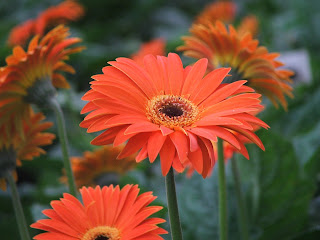On Tuesday I visited the Royal Project Development Center at Inthanon and the Inthanon Royal Research Station. This is one of the 36 Royal Project sites. The Royal Project began in 1969 when the King visited this area and observed how the hill tribe people were living. They were producing Opium Poppy and not making much money. The King set forth a vision of a new life for the hill tribes that included a better lifestyle and didn’t include opium production. Today there is no opium production in Thailand, instead the hill tribe people produce over 350 different fruit, vegetable, flower and fish products that many people thought could not be produced here. The station is on a mountain and the high elevation makes it possible to produce plants that usually grow in colder climates. Plants have been imported from all over the world and a lot of research has been done on which ones grow the best. This is the only project in the world to get rid of opium production, just think how wonderful it would be if similar things could happen in Afghanistan or in Columbia with cocaine production. They showed me their food safety and traceability systems. Most of the products are sold domestically but some are exported to Europe so they meet all of the Europe GAP requirements. They also supply the vegetables and fruit for Thai Airways in-flight meals. I got to talk to a farmer who produces celery and Chrysanthemums. He told me that he is rich by Thailand standards. He has about 1 million THB (33,333 USD) in annual sales and about half of that is profit. The average income for this area is 80,000 THB. The first picture below is of some workers peeling carrots before quick chilling them for transport. The second picture is their aquaculture operation that produces Rainbow Trout, which is a high value item in Thailand. The third picture is of a lady spreading fertilizer by hand in one of the “plastic houses” on the operation where I talked to the farmer. The forth picture is one of the beautiful flowers they produce for the domestic cut flower market and the fifth picture is of a young lady packaging some long stemmed roses for sale. The last picture is a view of some of the many plastic greenhouses on this mountain.







No comments:
Post a Comment